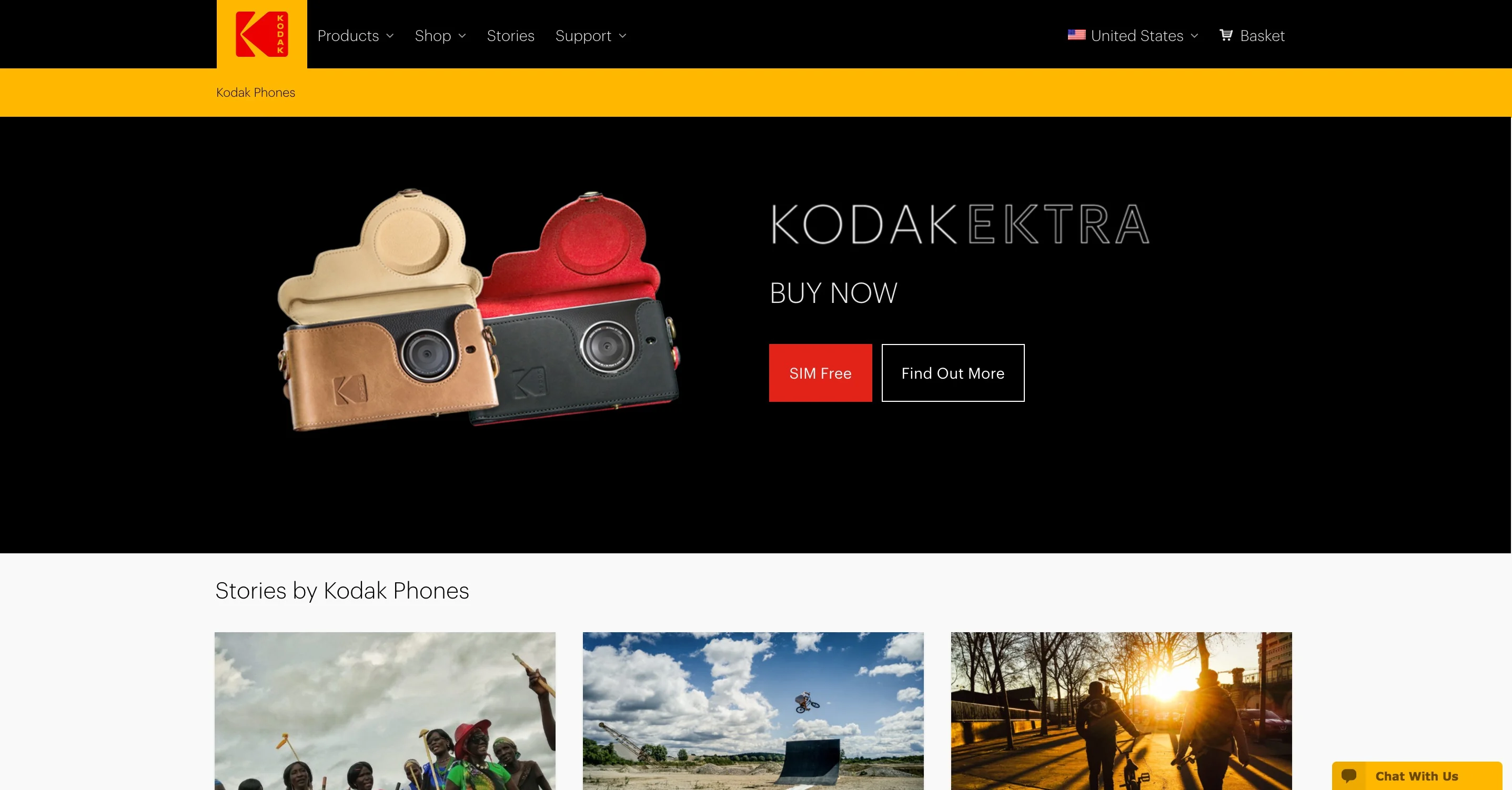
Sell more, however your customers shop.
Seamlessly blend brick-and-mortar with ecommerce when you unlock Buy Online, Pick Up In Store (BOPIS) functionality on BigCommerce.

Amazon Growth Strategy: How to Run a Multi-Billion Dollar Business Like Jeff Bezos

Remember in 1999 when the first Blackberry was released?
It was revolutionary: a mobile device that instantly made you connected and accessible anywhere you went.
Techies everywhere fell in love, and Blackberry quickly became the leading hand-held device.
Until Apple came along, that is.
Their revolutionary iOS reinvented how devices should operate, and it didn’t take long for Blackberries to become obsolete.
It’s a tale as old as time—and the nightmare of every business owner.
Today, no one turns to Blackberry for business advice.
Instead, we look to Amazon, a startup that quickly dominated its industry and set the standard for every business in just about every industry.
Now, guided by the book, Be Like Amazon: Even a Lemonade Stand Can Do It, we have the framework for your business to do just that: set the standard for your own industry in the same way Amazon does it for its own.
In Be Like Amazon, authors Jeffrey Eisenberg, Bryan Eisenberg and Roy H. Williams lay out 4 core principles that are responsible for Amazon’s explosive growth.
And here’s the exciting part…
Anyone Can Do It
While we all aim to imitate Amazon, can we really be like them?
We haven’t got an unlimited budget, a fleet of drones, or 43% of market share.
If that’s your worry, here’s the good news…
Being like Amazon isn’t a matter of size or budget or nifty technological gadgets.
It’s about reinventing business growth and rethinking your industry’s “operating system” so you can outpace the “Blackberries” in your space.
How?
By understanding (and implementing) the 4 pillars that drive Amazon’s success.
CEO Jeff Bezos has made these timeless concepts the foundation for every business he runs, regardless of its industry or the type of product it offers:
B2B – Amazon Web Services
Ecommerce – Amazon.com
Media – Amazon Prime
Publishing – The Washington Post
In each instance, Amazon’s 4 pillar business model is responsible for their incredible growth and profits.
Amazon’s 4 Pillars of Business Success
Amazon’s 4 pillars are universally the best way to operate and grow a profitable business today.
They work equally well for digital and physical businesses. And they’ll keep you focused on what matters most, guiding your decisions, your priorities and your day-to-day operations.
Let’s take a look.
Pillar #1: Customer Centricity
You’ve heard of WIIFM, or what’s in it for me, right?
For Bezos, customer centricity is WIIFM on steroids.
Rather than trying to stay ahead of his competitors, he tries to stay one step ahead of his customers.
Essentially, to be like Amazon, you’ve got to be obsessed with your customers’ experience, prioritizing their needs and desires above everything else. Amazon, is after all, the most customer-centric company is the world.
For instance, Amazon puts a chair in every boardroom to represent the customer — a physical reminder to innovate on their behalf.
And Amazon Echo, which began as a simple virtual assistant, has evolved into Echo Look, a hands-free camera and style assistant, and Echo Show, a communal household computer.
Amazon doesn’t even consider starting a new project until they’ve looked at it through the customer’s eyes. If someone wants to recommend a new product, they must write a (pretend) press release outlining the benefits of the product they envision.
Only after reviewing it from the customer’s perspective can they talk about code or get input from designers.
Pillar #2: Innovation
This is about coming up with new ideas and new ways of doing things, but not for the sake of creativity or impressing stockholders.
True innovation is about bringing value to your customers — because innovation that doesn’t benefit and serve your customers won’t help you grow.
Today, Amazon flexes its innovation muscles by exploring artificial intelligence (AI) and outer space (through Blue Origin, Bezos’ private space company).
But innovation isn’t confined to radical new ideas. It happens anywhere you creatively serve your customers, from your office cubicles to your meeting rooms.
Here’s how Bezos has explained his approach to innovation: “I like to wander” down the paths of ideas.
Wherever he wanders, he likes to leave room for inspiration, preferring “loose” meeting agendas over rigid ones. And when it comes to project management, he likes to be “stubborn on the vision, but flexible on the details.”
Pillar #3: Corporate Agility
Corporate agility is about speed of execution, the ability to remain flexible and adaptable regardless of your business’ stage of growth.
Often, as businesses grow, they lose that ability, and as soon as they do, it’s often the beginning of the end.
As an example, after a Kodak employee invented the digital camera in 1975, management promptly killed it. They were afraid digital innovations would cannibalize film sales.
Is it any surprise they filed for bankruptcy in 2012?
Since then, the Kodak brand has done a complete 180, following this Bezos pillar.

To be like Amazon, you need to be so agile, you’re willing to disrupt your own business. Bryan Eisenberg even recommends you create a team whose sole job is to put you out of business — because if you don’t come up with the innovations that shake up your status quo, someone else will.
“Give them the resources they need and cut them loose,” he says. “Then be agile and execute their ideas.”
Pillar #4: Continuous Optimization
Continuous optimization is hard for most businesses because it means you’ll never be satisfied or settle for “good enough.”
From messaging to packaging and returns, from your business operations to how your bathrooms are cleaned, there’s always room for improvement.
Optimization is about improving processes so you can become more efficient and bring more value to your customers.
Emphasis on bringing value to your customers.
Though each improvement may only shave percentages off your time or costs, over time, they add up. The result is higher profits and, if you’ve implemented the first pillar, happier customers too.
The Tiny Shift that Yields a Big Aha!
Do the 4 pillars really spell success?
As a test, Bryan Eisenberg ordered a Rubik’s Cube from a popular toy store and from Amazon.
The first thing he noticed was that on Amazon, the toy was half as expensive.
Score one for Amazon.
The next thing that stood out was his experience when the boxes arrived in the mail. Both had free two-day shipping (something Amazon has forced so many online businesses to do by being so dang good at it).
Amazon’s box had their custom-made packing tape emblazoned with “Echo” and things you might say to her, such as, “Alexa, tell me a joke.”
Mind you, this tape isn’t just another opportunity to promote their newest innovation. It’s an innovation in and of itself.
This tape is strong enough to hold the box shut, but it’s easy to open with your bare hands. So within minutes of delivery, Eisenberg’s kids had ripped open the box and were playing with their new toy.
Not so with the toy-store packaging. That box required a knife to cut through the tape. Then, the toy was further packaged in clam-shell packing that’s impossible to open.
Clearly, Bezos understands that the customer experience doesn’t end when UPS delivers your order. It includes frustration-free packaging and your first impression of the product itself.
This is a minor shift in perspective that makes a major difference in… well… everything.
Amazon’s 4 pillars, then, aren’t actually about making your business more successful.
That’s just a side effect.
The 4 pillars are about creating an Aha! moment at every touch.
So the question is, “How can you add an Aha! moment after your sales?”
For physical products, how can you make something as mundane as the packaging a memorable experience?
For digital products, how can you create delight and an intuitive experience accessing your product? How do you ensure, once they’re there, that they use it?
As marketers, we tend to focus all our attention on getting the sale, but it’s important to think about how we can optimize the experience immediately following the sale.
Bottom Line + Next Steps
Many businesses start out strong. In their first year or so, they’re great innovators with good customer service.
But as they grow, they begin to add layers of management and bureaucracy, making innovation all but impossible.
The original passion for the customer often dissipates. Profits become the highest priority, and innovation and optimization grind to a halt.
Amazon’s 4 pillars are designed to keep your focus where it belongs: on the foundational principles that spur growth and profits.
Make them the pillars of your business, and you’ll easily Be Like Amazon. Or don’t, and you’ll be like Blackberry, Kodak, Blockbuster, and other brands that failed to innovate.
It’s an easy choice when you think about it.
Action Items
Watch the interview above to see what Ryan Deiss and Bryan Eisenberg discussed around the 4 Pillars of Amazon’s Success last time Bryan stopped by the DigitalMarketer office!
Go to belikeamazon.com to find out how your company rates on the 4 pillars of Amazon success.
Get the book: Be Like Amazon: Even a Lemonade Stand Can Do It.
Become obsessed with applying these pillars to your business.
50% Off The Content + Commerce Conference
Learn how online brands are growing to $10,000,000+ in annual sales through the merger of content and commerce right now. This Sept. 18-20, 2017 conference features Casper, Rue La La, RACKED, Jet.com, ZICO, Fossil and more. Use the discount code b1g1 and you’ll get 50% + an extra ticket. Learn how to make money now.


Lindsay Marder is the Managing Editor at Digital Marketer where she researches content strategies that work for for ecommerce businesses (i.e. how to produce content that sells more). Whether she's covering Amazon or start-ups, she's always up to speed on the newest working trends in commerce and content.